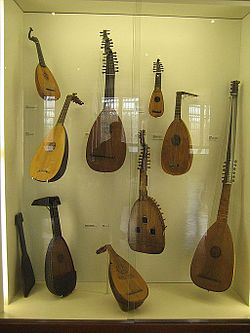Home is where your heart is
MUSIC
By David Laninšek and Sara's feedback
Andalusian classical music is a style of Arabic music found in different styles across the Maghreb. It originated out of the music of Al-Andalus (Muslim Iberia) between the 9th and 15th centuries. Some of its poems were found to be composed by authors such as Al-Shushtari, Ibn al-Khatib and Al-Mu'tamid ibn Abbad.
ORIGINS
Andalusian classical music was allegedly born in the Emirate of Cordoba (Al-Andalus) in the 9th century. The Arab/ Kurdish or Persian musician (as his origins were not known but all historians agreed that he was of dark skin that's why he was called the blackbird.), residing in Iraq, Ziryâb (d. 857), who later became court musician of Abd al-Rahman II in Cordoba, is sometimes credited with its invention. Later, the poet, composer, and philosopher Ibn Bajjah (d. 1139) of Saragossa is said to have combined the style of Ziryâb with Western approaches to produce a wholly new style that spread across Iberia and North Africa.

By the 10th century, Muslim Iberia had become a center for the manufacture of instruments. These goods spread gradually to Provence, influencing French troubadours and trouvères and eventually reaching the rest of Europe. The English words lute, rebec, guitar, and naker derive from the Arabic oud, rabab, qithara and naqareh, although some Arabic terms (qithara, for example) had been derived in their turn from Vulgar Latin, Greek and other languages like Persian.
MUSIC TODAY
A suite form called the Andalusi nubah forms the basis of al-âla. Though it has roots in Andalusia, the modern nûba is probably a North African creation. Each nuba is dominated by one musical mode. It is said that there used to be twenty-four nuba linked to each hour of the day, but in Algeria there are only sixteen nuba and in Morocco eleven have survived. Each nuba is divided into five parts called mîzân, each with a corresponding rhythm. The rhythms occur in the following order in a complete nuba:
-
basît (6/4)
-
qâ'im wa nusf (8/4)
-
btâyhî (8/4)
-
darj (4/4)
-
quddâm (3/4 or 6/8)
INFLUENCE OF ANDALUSIAN MUSIC
Andalusia was probably the main route of transmission of a number of Near-Eastern musical instruments used in European music: the lute from the oud, rebec from the rebab, the guitar from qitara and Greek kithara, and the naker from the naqareh. Further terms fell into disuse in Europe: adufe from al-duff, alboka from al-buq, anafil from al-nafir, exabeba from al-shabbaba (flute), atabal (bass drum) from al-tabl, atambal from al-tinbal, the balaban, sonajas de azófar from sunuj al-sufr, the conical bore wind instruments, the xelami from the sulami or fistula (flute or musical pipe), the shawm and dulzaina from the reed instrument zamr and al-zurna, the gaita from the rhaita, rackett from iraqya or iraqiyya, geige (German: used to describe the violin, other early bowed instruments and the 'geigenwerke') from ghichak.

Sources: Wikipeida
It is a really well done job, but I think it would have been interesting to talk about modern Andalusian music, for example, the most famous songs or artists here.
Pop and Flamenco are the most popular genres. A lot of famous artists were known thanks to a TV show called Operación Triunfo, where unknown people had to sing to win the show. Andalusian people who participated in this show are: David Bisbal, Manuel Carrasco or Rosa López. These artists usually sing pop.
Also, Camarón de la Isla (1950-1992) was one of the most famous flamenco singers and Paco de Lucía (1947-2014) was a flamenco guitarist.

All in all, your project was pretty good, I did not know a lot of things about Andalusian music, so congratulations!
Sara Fernández Pérez.